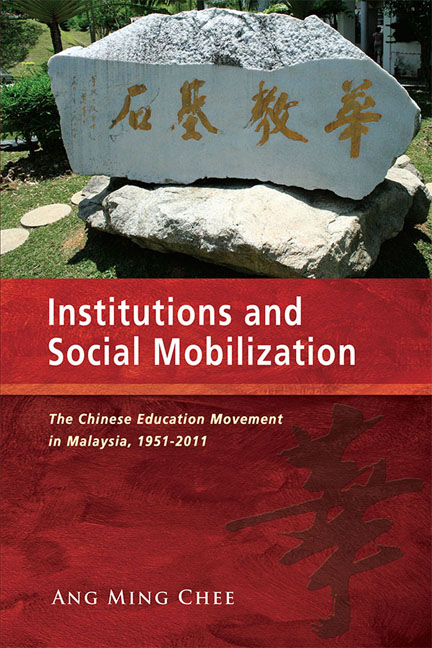Book contents
- Frontmatter
- Dedication
- Contents
- List of Tables, Figures, and Maps
- Acknowledgements
- Abbreviation
- 1 Institutions and Social Mobilization
- 2 Nation Building and Formation of Social Movement
- 3 Challenges and Adaptations
- 4 Leaders, Alliances, and Politics
- 5 Mobilization Machinery
- 6 Social Mobilization in Non-Liberal Democracies
- Appendices
- Bibliography
- Glossary of Non-English Text
- Index
- About the Author
3 - Challenges and Adaptations
Published online by Cambridge University Press: 19 May 2017
- Frontmatter
- Dedication
- Contents
- List of Tables, Figures, and Maps
- Acknowledgements
- Abbreviation
- 1 Institutions and Social Mobilization
- 2 Nation Building and Formation of Social Movement
- 3 Challenges and Adaptations
- 4 Leaders, Alliances, and Politics
- 5 Mobilization Machinery
- 6 Social Mobilization in Non-Liberal Democracies
- Appendices
- Bibliography
- Glossary of Non-English Text
- Index
- About the Author
Summary
INTRODUCTION
Chapter 2 detailed the formation of the Chinese education movement, its trajectories and the external challenges faced during the early stages of the movement during Malaya's transition from a colony to an independent state. The chapter demonstrated the significant role that Chinese elites’ personal social capital played in determining the social movement's trajectories. The movement gained momentum in the 1950s through the collaboration amongst MCA, Dongzong, and Jiaozong under the framework of the Grand Three Associations of Chinese Education. The collaboration proved its value in defending the interests of Chinese schoolteachers and Chinese school committee communities when Chinese schools were incorporated into the national education system under the 1957 Education Ordinance. Unfortunately, the collaboration fell apart when MCA's leadership was reshuffled, placing the survival of Chinese schools under threat as the state's assimilative policies of the 1960s and 1970s took hold.
Due to the difficulty of penetrating the movement's stronghold at the central level, the state began to impose a series of limitations and soft coercive approaches by manipulating state agencies, such as Ministry of Education, to weaken the movement at the local level. This divide-andattack strategy significantly limited the capacities of the movement agencies, hitting the movement's local-central associational linkages particularly hard. This chapter argues that the state, through manipulating state institutional mechanisms such as education policies and distribution of financial resources, managed to weaken the movement without using force. This strategy enabled the state to suppress the movement, and at the same time, secure the political interests of the non-liberal democratic government to stay in power. Such an environment forced the social movement to learn, adapt, and withstand challenges, which became the key factor to its survival.
In order to examine each of these challenges in detail, this chapter is divided into four sections. The first section presents the challenges faced by Chinese school committees when their traditional role as caretakers of Chinese schools were severely threatened and weakened by state-imposed structural constraints through educational policies and distribution of state resources. These constraints altered the character, structure, and capabilities of these local agencies, resulting in changes to their involvement in the Chinese education movement.
The second section describes a critical turning point for Chinese schools in the 1970s when English-medium primary schools were phased out by the state.
- Type
- Chapter
- Information
- Institutions and Social MobilizationThe Chinese Education Movement in Malaysia, 1951-2011, pp. 71 - 99Publisher: ISEAS–Yusof Ishak InstitutePrint publication year: 2014



